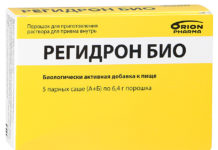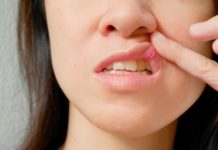Bearberry is a perennial shrub that belongs to the heather family. It is a potent natural diuretic. The leaves of the plant have a bitter taste and are used to treat diseases of the urinary system. Few people know that the bear’s ear (the popular name for the shrub) has a positive effect on the skin and helps in the fight against age spots and freckles.
Material Content:
Chemical composition
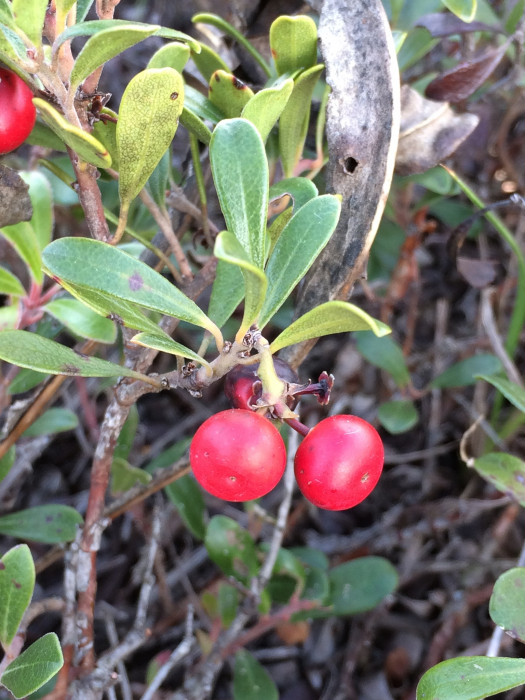
Like most medicinal herbs, it contains flavonoids (polyphenols), including quercetin, catechins, anthocyanins. These compounds have antioxidant and antimicrobial effects, reduce capillary fragility.
The composition contains tannins with astringent and anti-inflammatory properties, several important organic acids (ursolic, quinic, gallic, formic, etc.), vitamin C.
All these components are useful, but the highest content (up to 20%) of arbutin in the leaves is of greatest interest.
The healing properties of bearberry
Arbutin is a bitter substance with an antiseptic effect. It provides an anti-inflammatory and antimicrobial effect in cystitis and other diseases of the urinary system, as it penetrates directly into the bladder.
In its pure form, the bear’s ear is used in the treatment of diseases of the urinary system. Grass is also used in gynecology to treat various infectious and fungal diseases.And also used as an adjuvant for sexually transmitted diseases (topically, in the form of douching).
Multicomponent fees with this plant are used to treat:
- rheumatism and gout;
- arterial hypertension;
- inflammatory diseases;
- skin inflammations;
- disorders of the nervous system.
Bearberry has an astringent effect, therefore it is also used externally to accelerate the healing of wounds and abrasions, as well as with purulent inflammation on the skin (boils). In cosmetology, plant extract is used to combat pigmentation.
Traditional medicine offers many ways to use the bush for medicinal and cosmetic purposes, but first you need to properly prepare the raw materials.
Collection, procurement, storage rules
Bearberry loves the cold climate, therefore it is found mainly in Siberia. It is a rare shrub with dense oval leaves and red berries. The main task for an inexperienced herbalist is to be able to distinguish a medicinal plant from lingonberries. Both plants are medicinal and have similar healing properties, but still differ somewhat in action and indications.
Note to the herbalists! Bearberry has flatter leaves of obovate shape with a clearly visible mesh of depressed veins. Their upper and lower parts are of the same color. The berry is dry, powdery with one hard bone. And the lingonberry leaves are larger, oval in shape, the reverse side is lighter, multiple dark points are visible on it. The berry is juicy with many small seeds.
Leaves are used for medicinal purposes, it is recommended to collect them before flowering - in March and April. From one bush you can cut no more than 5 shoots, otherwise the plant will die. To dry, the leaves should be laid out in the open. The process is long, drying takes up to three weeks.
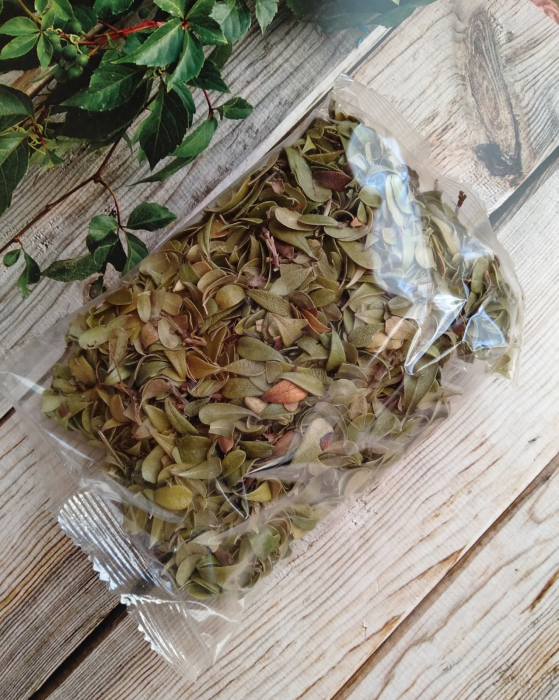
Store in a dry room, previously shifting into bags of cotton cloth. Shelf life - up to 5 years.
Residents of warm latitudes to independently procure a medicinal plant is problematic. There is only one way out - to purchase dried bearberry leaves at any pharmacy.
Traditional medicine recipes
A decoction, infusion, powder and alcohol tincture are prepared from the leaves. Each medicine has its own role.
Indications for use:
- cystitis, pyelonephritis - as a diuretic and antiseptic;
- rheumatism, arthritis, gout - as an anti-inflammatory and analgesic;
- prostatitis - to reduce swelling of the prostate, normalize urination;
- heartburn, gastritis - as an astringent.
This is only a small part of the indications for use, because bearberry is successfully combined with other medicinal plants, which means that the list of diseases is expanding.
Infusion
There are two ways to prepare the infusion - cold and hot. The ingredients are the same: 1 tbsp. l raw materials per 1 liter of boiled water. To prepare the medicine in a cold way, water of room temperature is used, the agent must be infused for a day. Hot infusion needs boiling water, it is ready for use in 3-4 hours.
Tip: infusion can be prepared in a thermos. In addition, it is convenient to take such a container with you, because treatment with a bear’s ear requires regular medication. The raw materials must be filled with water, and then tightly cork the container with a lid and leave for several hours.
The drug is effective for inflammatory diseases of the kidneys and bladder. It should be taken 100 ml three times a day. The required amount of infusion can be diluted with warm water and drunk like tea, or take a therapeutic dose, preheating the liquid to a temperature of 37-38 degrees.
Decoction
For the preparation of broth 1 tbsp. l pour 300 ml of boiling water on the leaves, hold for 15-20 minutes in a water bath, and then insist in warmth for another 40 minutes. Filter the finished product and take two sips three times a day.
The broth is effective in urolithiasis, pyelonephritis, prostatitis, acute cystitis.It is allowed to take it with heart failure as a diuretic, for this 1 tbsp. dilute with 100 ml of water and drink twice a day.
On a note. The plant is effective in the fight against cellulite due to the diuretic effect. It helps to quickly remove excess water from the body and get rid of edema, which in some cases is the cause of the “orange peel”. You can take an infusion or broth, or make tea - just brew ½ tsp. raw materials in a cup of boiling water, insist 7-8 minutes, and then drink.
Tincture
Alcohol tincture is an effective remedy for prostatitis. To prepare the medicine, you need 5 tbsp. leaves are placed in a glass container, pour 100 ml of vodka, cork with a lid and insist for two weeks. Take 15 drops three times a day.
Tincture can be used externally for eczema, diathesis, skin ulcers and long-lasting purulent wounds.
Powder
To prepare the powder, it is necessary to grind the dried leaves of a bear's eye in a blender or coffee grinder. This form of medicine is intended for the treatment of skin diseases, wounds, ulcers, acne.
- From non-healing wounds: sprinkle powder on damaged skin, put on a bandage from a bandage, leave for 30-40 minutes.
- For ulcers, acne, boils: mix a spoonful of powder with a spoonful of water, apply soaked pulp to damaged skin and leave for half an hour. After rinse with running water.
Application in cosmetology
If you carefully study the composition of most whitening creams from manufacturers of natural cosmetics, bearberry is found in the list of ingredients. Arbutin, hydroquinone, vitamin C as part of a bear’s eye is an effective trio against freckles and age spots.
Folk recipes for skin beauty:
- mask: 1 tbsp kaolin, ¼ tsp soda, 2-3 tablespoons decoction of a bear’s ear;
- lotion: 20 drops of alcohol tincture, 20 ml of cucumber juice, 150 ml of mineral water without gas;
- cosmetic ice: pour 25 g of leaves with 200 ml of boiling water, leave for an hour and freeze.
Lotion or ice is used twice a day, a mask 1-2 times a week, but with dry skin they are not recommended. During the application of such funds for the face, you need to use a cream with a UV filter (at least SPF15).
Bearberry Cosmetic Creams
Not every woman likes to cook home-made cosmetics, because this is a rather time-consuming process. An alternative to folk cosmetics is special whitening products based on bear’s ear extract.
Most popular:
- cream and mask Clean line “Bearberry and rosehip oil” (55+ years);
- clarifying cream Belle Jardin "Hibiscus and bearberry" (for all ages);
- whitening night cream The best traditions of Bearberry and Licorice;
- AVON Naturals product series “Sea buckthorn and bearberry” (40+).
These cosmetics are distinguished by their affordable cost and the presence of natural ingredients in the composition.
Contraindications and side effects
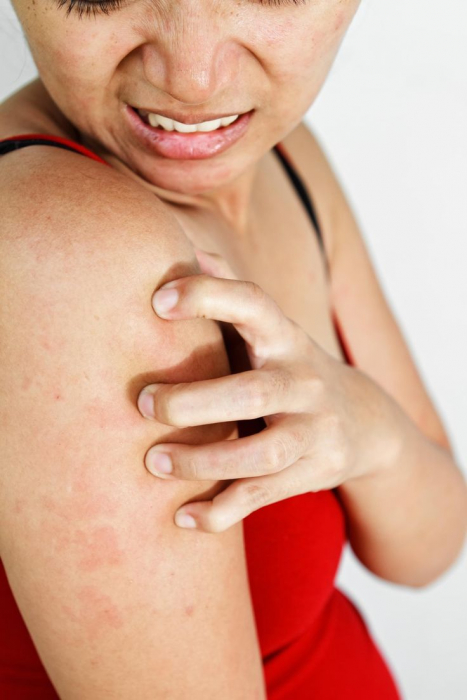
Bearberry preparations, both self-made and pharmacy, are contraindicated during pregnancy (since they can provoke uterine contractions and miscarriage) and lactation (as they reduce the production of breast milk, like any other diuretic), in acute renal failure and with glomerulonephritis, as well as children under 12 years of age and persons with hypersensitivity to this plant.
Side effects include: allergic reactions (usually urticaria), nausea, diarrhea, vomiting, urine staining in green.
With prolonged use or with an overdose, exacerbation of inflammatory diseases of the kidneys as a result of prolonged irritation of the renal tubules is possible.
Traditional medicine should not be abused. With cystitis and other diseases of the urinary tract, you should first consult with a urologist, and only then proceed with self-medication.






